
JAPANESE PRINTS
A MILLION QUESTIONS
TWO MILLION MYSTERIES
Ukiyo-e Prints浮世絵版画 |
|
Port Townsend, Washington |
|
RYUSAI SHIGEHARU |
|
鉚斉重春 |
|
りゅうさいしげはる |
|
1803-53 |
|
Actor: Onoe Fujaku (?)* |
|
尾上美寉 (?)* |
|
おのえふじゃく (?)* |
|
Publisher: Ise-ya Kanekichi
|
|
伊勢屋兼吉 |
|
いせやかねきち |
|
Print Size: 14 9/16" x 10" |
|
Signed: Ryūsai Shigeharu ga
|
|
SOLD! |
|
*My lack of language skills are eminently plain here to anyone who knows better. I translated 尾上美寉 as Onoe Fujaku. However, research led me to 尾上芙雀 also pronounced as おのえふじゃく as the actor's true name. If anyone can clear this up for me I would be very appreciative. Please contact me. |
|
|
|
THE CHINESE ARMOR MOTIF OR BISHAMONKIKKŌ 毘沙門亀甲 びしゃもん.きっこう(?) |
||
|
|
||
|
One of the major design motifs in traditional Japanese prints has its origin in the armor worn by ancient Chinese warriors. This is obvious when it appears on the outfits of certain Suikoden figures by Kuniyoshi. However, most of the time it seems to be nothing more than a decorative design with no specific frame of reference. This is particularly true when it, i.e, the inverted "Y" pattern or tortoiseshell motif, is only one small element of a figure's costuming. It is even more detached from its original meaning when seen on the kimonos of beautiful women. Who is looking at the patterns when the figure is so seductive? For contemporary viewers it has lost its meaning, but for the 18th and 19th century public its significance was clear. |
||
|
Obi motif |
|
Yoshitora fabric motif |
|
|
||
|
Kunisada fabric motif |
Eisho obi motif |
Fabric motif on a |
|
|
||
|
Years ago I asked Laurence Sickman, one of the greatest experts on Chinese art in the twentieth century, if he knew what the particular significance of this motif was. He told me that it represented Chinese armor. He may or may not have mentioned that it was derived from the tortoiseshell. It was so long ago that I don't quite remember. While trying to research this subject I have been struck by the paucity of information both on the Internet and in my library which is relatively extensive. (Everything is relative.) I looked at Merrily Baird's book Symbols of Japan, but her only reference to it was in a description of diaper patterns where the tortoiseshell could be hexagonal or octagonal. She notes an inlaid box in with this tortoiseshell pattern or kikko mon stored at the Shosoin in Nara, but she makes no connection with anything military.
The Dictionary of Japanese Culture by Kojima and Crane was no better. A good book, but unhelpful in my quest. The Kodansha Encyclopedia of Japan was also silent on this topic. I began to doubt my memory. My respect for Sickman's knowledge was too great for me to doubt him so I had to doubt myself. And then I looked up the character for armor in Japanese and lo and behold there it was --- the character 甲 for armor was the same as the character for tortoise shell. The connection was clear. Sickman was correct.
The disconnect between a decorative motif and is original meaning is understandable considering the source, i.e., the box mentioned by Baird in the Shosoin. However, Kuniyoshi's use of it on Suikoden figures indicates that there had to be some knowledge of its alternative usage. Remember the fighters of the Suikoden were based on Chinese warrior bandits.
It is amazing what patience will do for you. Or, at least, for me. Finally I found the term for this particular pattern: Bishamonkikkō - a combination of the name of one of the Seven Propitious Gods and the tortoiseshell patterned armor he wears. This motif is also related to one called the 'sword tip' pattern or kensaki (剣先 or けんさき) which also described the shape of a squid.
What is even more amazing to me is that there seems to be a term for just about anything. If something exists someone has named it. Could this get any more esoteric? |
||
|
|
Universal or reinvented? |
|
|
|
|
|
|
|
|
|
|
"To the traveller imbued with a feeling for the historical and poetical... the Alhambra is as much an object of devotion as is the Caaba to all true Mulims."
Washington Irving The Alhambra 1851
Years ago I spent a summer in Europe. I was awed and dazzled on a regular basis, but rarely did I have the heightened sensations I experienced when I visited the Alhambra in Granada, Spain. Rarely have I felt so moved since. It was both exotic and otherworldly for me. Dreamy and heavenly. I should imagine that very few visitors could come away from that place without being profoundly changed. There was so much to see and I was so incredibly ignorant. (I still am.) One thing I did miss - or at least didn't recall - were a set of stunning windows which used the tortoiseshell motif in an amazing decorative arrangement. So, where did the inspiration for these windows come from? Clearly they had an Asian origin. What I don't yet know is whether they came into the Muslim world via trade with ancient China or the cultural borrowing went the other way. Either way, it is absolutely amazing to me that one can find this exact motif by looking closely at Japanese fabric designs, Chinese armor or by visiting a palatial retreat on the hot and dusty plains of southern Spain.
In 1922 M. C. Escher visited the Alhambra. It changed him profoundly. As much so as it changed me. One look at his symmetrical patterns compared to the decorative tiles and carvings at the Alhambra make this connection unmistakable. Off hand, I can't find any direct use of this tortoiseshell motif, but still some of his lizard like creatures may be Escher's reinvention of this design. You be the judge. |
||

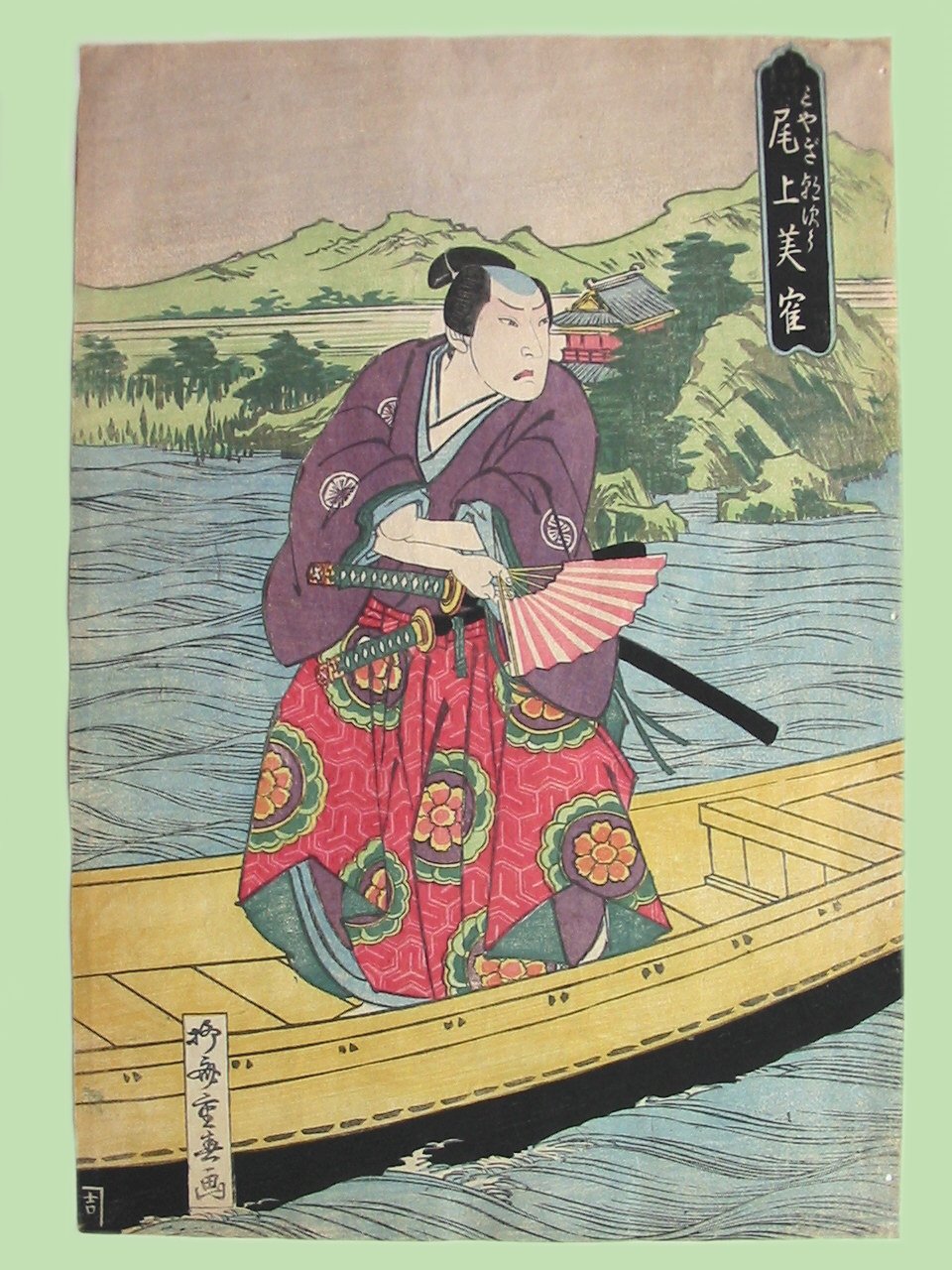
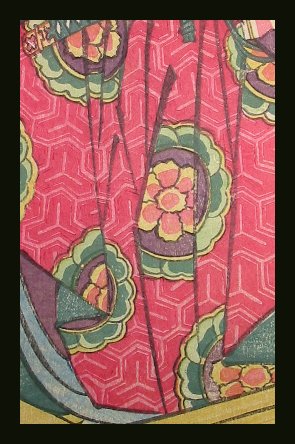
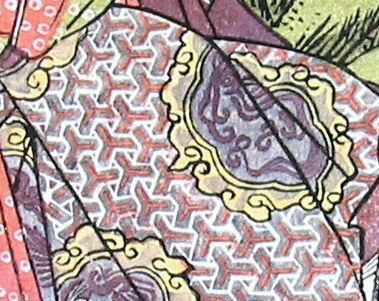
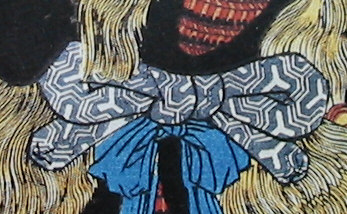
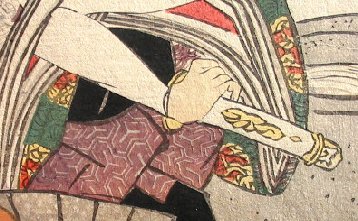

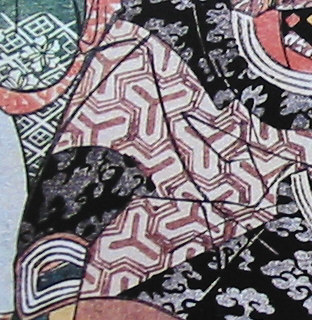
 HOME
HOME